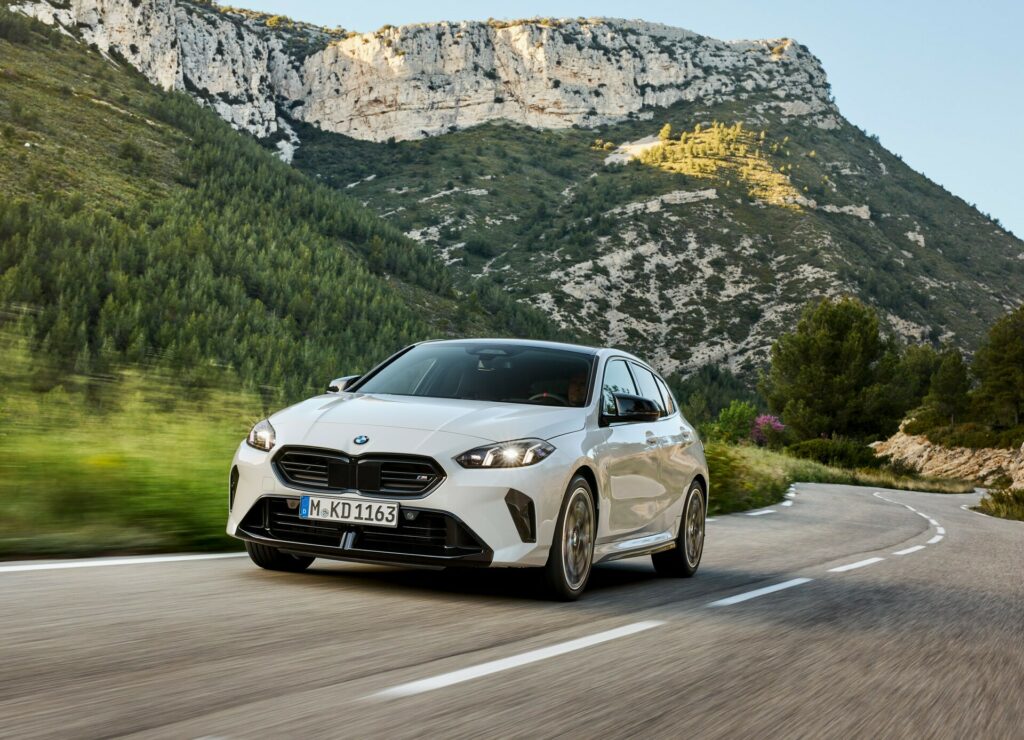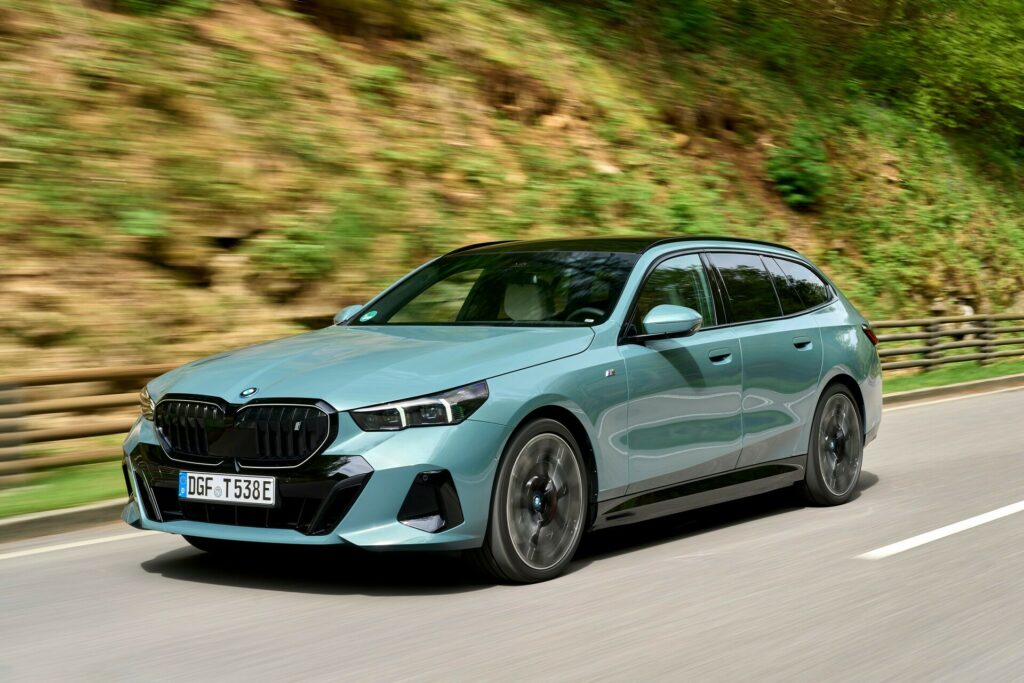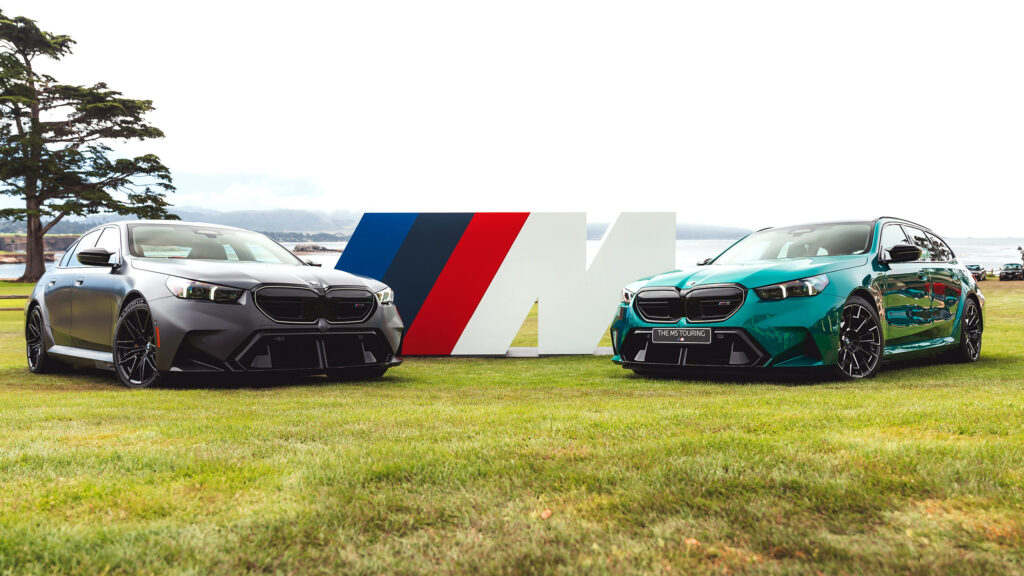- BMW has announced an assortment of fall updates including new powertrains for the 1-Series, 5-Series, and i5.
- A number of plug-in hybrids, including the M5, have significantly reduced recharging times.
- The M135 xDrive is getting a new M Technology Package which adds lightweight wheels, beefier brakes, extra bracing, and a revised suspension.
Fall has officially arrived and that means it’s time for BMW’s autumn update. This one is pretty modest, but a number of models offer new powertrains and faster charging.
Kicking things off is the entry-level 1-Series, which is gaining a new 116 variant with a 1.5-liter three-cylinder petrol engine producing 121 hp (90 kW / 122 PS) and 170 lb-ft (230 Nm) of torque. It’s paired to a seven-speed dual-clutch transmission, which sends power to the front wheels. This setup results in a leisurely 0-62 mph (0-100 km/h) time of 9.8 seconds.
Customers will also find a new 123 xDrive, which has an electrified four-cylinder powertrain producing a combined output of 215 hp (160 kW / 218 PS). It enables the model to scoot from 0-62 mph (0-100 km/h) in a respectable 6.3 seconds.
M135 xDrive enhancements
The M135 xDrive is getting a new M Technology Package in November, which adds aluminum anti-roll bars, new front shocks, and underfloor braces for steering precision and “more engaging responses.” The package also includes 19-inch forged wheels that are wrapped in sport tires and backed up by M Compound brakes. Rounding out the highlights are extended Shadowline exterior trim and M Sport seats with an illuminated M logo in the backrests.
More: New BMW 1-Series And M135 Ditch The ‘i’ And Manual Gearbox
The 1-Series lineup also sees a host of other small changes including several new colors such as Fire Red metallic, BMW Individual Tanzanite Blue metallic, and M Brooklyn Grey metallic. They’re joined by dark chrome interior trim and a new 19-inch wheel design.

New 520i Touring and 550e xDrive models
Wagon fans can look forward to a new 520i Touring, which has a four-cylinder petrol engine with 48V mild hybrid technology. This enables the model to produce a combined output of 205 hp (153 kW / 208 PS) and 243 lb-ft (330 Nm) of torque, allowing for a 0-62 mph (0-100 km/h) time of 7.8 seconds.
A 550e xDrive Touring also joins the lineup with a plug-in hybrid powertrain that consists of a 3.0-liter petrol engine, a battery pack, and an electric motor integrated into the eight-speed automatic transmission. This gives the wagon a combined output of 483 hp (360 kW / 489 PS) and 332 lb-ft (450 Nm) of torque. More importantly, the model can hit 62 mph (100 km/h) in 4.4 seconds and travel 51-56 miles (82-90 km) on electricity alone.

If that’s not eco-friendly enough, there’s the new i5 xDrive40 Touring. It features an 81.2 kWh battery pack that feeds a dual-motor all-wheel drive system developing 389 hp (290 kW / 394 PS) and 435 lb-ft (590 Nm) of torque. The dash to 62 mph (100 km/h) takes 5.5 seconds, while the top speed is 134 mph (215 km/h). Buyers can also expect to travel between 281 and 323 miles (452 and 520 km) on a single charge.
M5 and other PHEVs get charging boost
Getting back to plug-in hybrids, the M5, X5 xDrive50e, an all PHEV versions of the 5-Series get a charging boost. In particular, their AC charging capacity increases from 7.4 kW to 11 kW for “significantly shorter” recharging times. Thanks to the change, the M5 can go from a 0-100% charge about an hour faster than before.
The rest of the updates are largely software-focused and include optimized digital key sharing and the addition of in-car gaming as well as video streaming to an assortment of models including the X5, X6, X7, XM, iX, and 7-Series. BMW Operating System 9 also gets a few tweaks including some aimed at making it easier to find a high-speed charging station.





